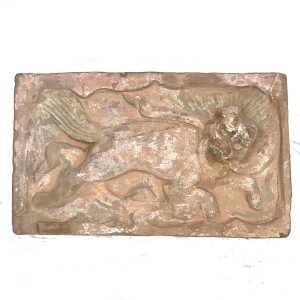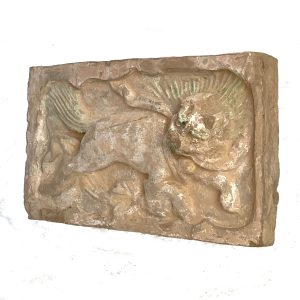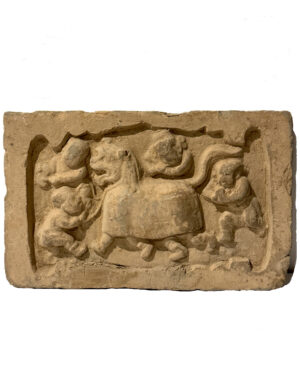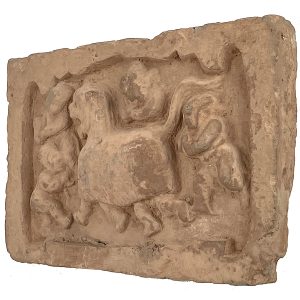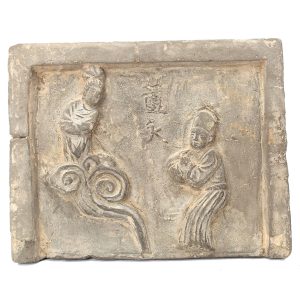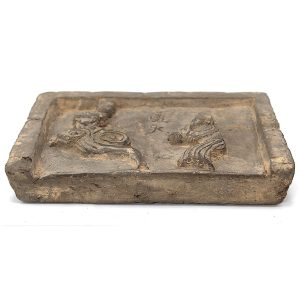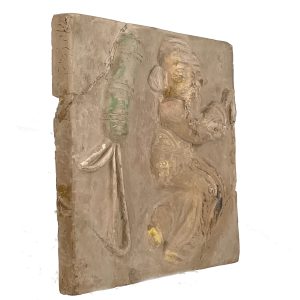Showing 25–29 of 29 results
-
Sale!


$485.00 Original price was: $485.00.$395.00Current price is: $395.00.
The Song dynasty (960–1279) is considered the most culturally brilliant era in later imperial Chinese history. A massive expansion during this dynasty produced government, public and religious buildings and tombs with walls decorated with earthenware unglazed mold-made brick tiles. Some were purely decorative and others were wishes for happiness and comfort in the deceased’s afterlife…
-
Sale!


$465.00 Original price was: $465.00.$350.00Current price is: $350.00.
H: 6.26″ W: 9″ D: 1.625″ | CALL 213-568-3030 OR EMAIL [email protected] FOR SHIPPING.
This late Song brick tile portrays a feasting couple with a figure points to a stylized image of a bat flying (for good luck) in the sky.
-
Sale!


$495.00 Original price was: $495.00.$395.00Current price is: $395.00.
H: 7.25 ” W: 11.5″ D: 1.75 ” | FREE SHIPPING WITHIN CONTINENTAL U.S.!
Song brick tiles like this decorated government, public and religious buildings, often depicting mythical animals, auspicious objects and holiday celebrations. This tile shows a traditional lion dance performed at Chinese New Year to attract prosperity and good luck for the coming year.The lion is flanked by 2 frightened children and a person in anjali mudra, symbolizing composure that could counter balance the children’s fear.
-


$445.00
Chinese funerary tiles, as forms of mingqi adorned tomb as early as the Han dynasty depicting everyday scenes, entertainment, mythical beasts, folklore, history, literature and poetry. A Han stone tomb relief rubbing in Stories from China’s Past (p. 173) labeled “Ascending to Heaven in Deer Chariot” is reflective of this Song brick-tile. During the Song…
-
Sale!


$495.00 Original price was: $495.00.$325.00Current price is: $325.00.
H: 7” W: 5” D: 2.75” | FREE SHIPPING WITHIN CONTINENTAL U.S.
This Song earthenware tile depicts the legendary scholar, poet and alchemist Taoist deity Lu Dongbin, one of the Eight Immortals, who sought to discover the elixir of immortality and used charms still used in Chinese homes to prevent illness and ward off evil. He and his fly whisk are auspicious symbols of longevity and a wish for immortality. Firecrackers, are traditionally used to celebrate the Chinese New Year, to bring in wishes for a safe and prosperous year, scare away evil and provide pleasure for the ancestors’ spirit.
End of content
End of content

